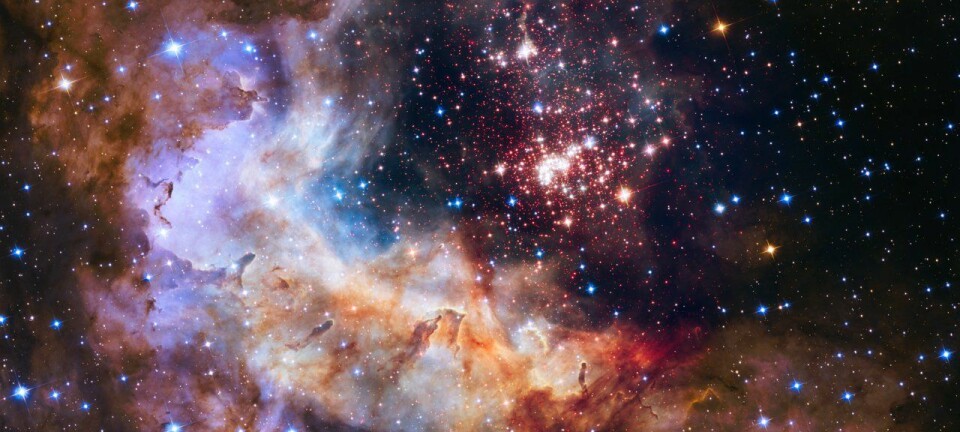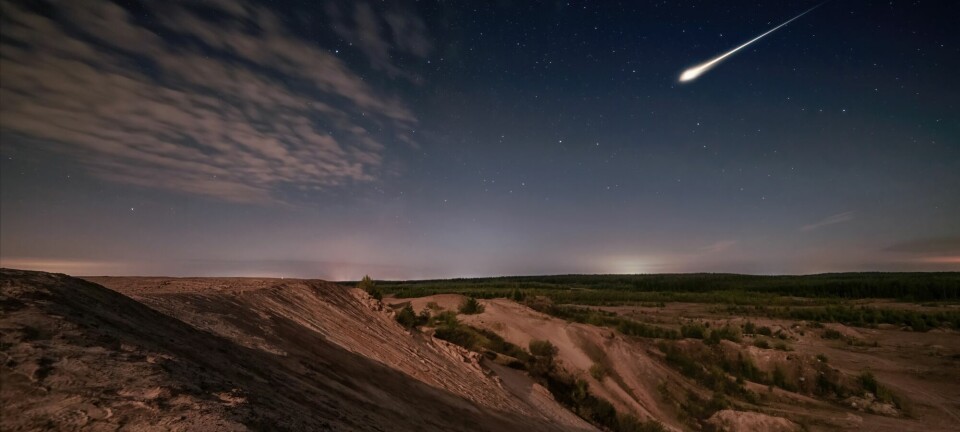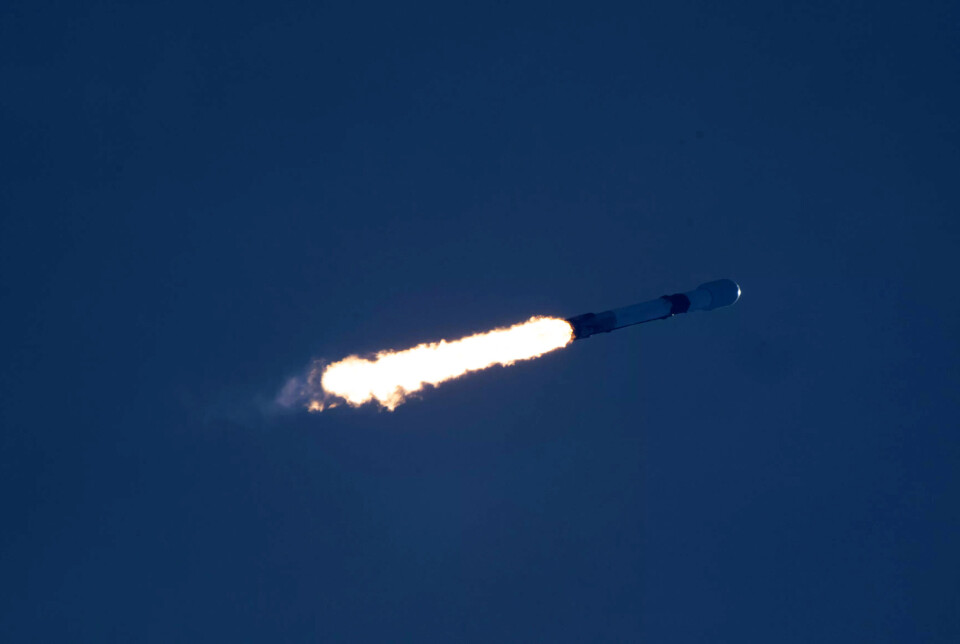
New space telescope will shed light on dark sides of the universe
The European space telescope Euclid has been launched. One researcher predicts this will be one of the largest mapping projects of how matter is distributed in the universe.
Euclid was launched from Cape Canaveral in Florida in the United States on 1 July.
Now the space telescope is on its way to its destination in the opposite direction from the sun, where it will peer out into the universe.
Euclid has an important task ahead of it. The space telescope will map the distribution of galaxies and provide information about the structure of the universe on the largest scales.
It will take pictures of billions of galaxies that are up to 10 billion light years away. Euclid will create the most accurate 3D map of the universe to date, covering a third of the sky.
The aim is to gain new knowledge about the dark side of space.
Does not emit light
Everything astronomers can see in the universe, like stars, gas and moons, is made up of known particles.
But on universal scales, galaxies appear to contain more mass than they should. Something invisible is causing the galaxies to have much more gravity than expected. This something is called dark matter, the matter we cannot see.
What the dark matter consists of is still unknown.
The universe is governed by a type of energy that does not emit radiation: dark energy.
The universe should actually have expanded more slowly as time passed, because gravity is an attractive force, according to an article from the University of Oslo (in Norwegian).
But contrary to expectations, the expansion of the universe is accelerating with time. The dark energy appears to cause repulsive gravity.
In sum, we only know five per cent of the ordinary matter of the universe. Dark matter makes up 27 per cent and dark energy 68 per cent.
Scientists ready for the incoming data
Euclid was built by the European Space Agency (ESA) and will contribute to obtaining new knowledge about the dark matter of the universe.
Norway is involved in the project through a group of researhcers from the Institute of Theoretical Astrophysics at the University of Oslo (UiO). They will be working with the data that will eventually be coming in. Other scientists are working on the engineering side of things, according to the Norwegian Space Agency (in Norwegian).

Hans Arnold Winther is an associate professor at UiO’s Institute of Theoretical Astrophysics. He has worked on the scientific part of the Euclid project and will use the data coming from the space telescope.
Winther does cosmology research, which is the science of the universe as a whole, how it began and has developed, and what it will look like in the future.
Seeing the big picture
Euclid is what’s called a survey telescope, says Winther.
You might be familiar with the Hubble Space Telescope. Hubble has provided us with beautiful images of individual galaxies in all their glory. It captures detailed images showing collapsing galaxies, magnificent star births and supernova remnants.
“Hubble looks at part of the sky and uses long exposure to get really high-resolution images,” says Winther.
“Euclid is slightly different in that it scans the entire sky over time to cover the largest possible area and largest possible volume of our universe. It will take a lot of pictures of galaxies ranging from those close to us to ones that are several billion years back in time.”
Euclid makes it possible for us to create a detailed map of how matter in the universe is distributed, says Winther.
The work that Euclid will do will be the first major mapping of its kind done from space. Ground-based telescopes have been used in the past. The biggest project was the Sloan Digital Sky Survey, Winther says.
The Cosmic Network
Another important instrument has been the Planck telescope. It has mapped the cosmic microwave background radiation, the oldest radiation that can be observed in the universe, from the time when the universe was 400 000 years old.
The Planck telescope provides a snapshot of how things looked over 13 billion years ago. Now we’re trying to fill in what’s in between, says Winther.
How can the Euclid mapping help to teach us more about dark matter and dark energy?
At the largest scale, cosmologists can see the cosmic web. Galaxies are distributed in collections of galaxy clusters and superclusters, forming thread-like structures in a giant spider's web.
“At really large scales, there are really only two things you care about when you work with it. One is gravity, which binds things together. The second is the expansion of the universe, which makes it harder to get things to implode,” Winther says.
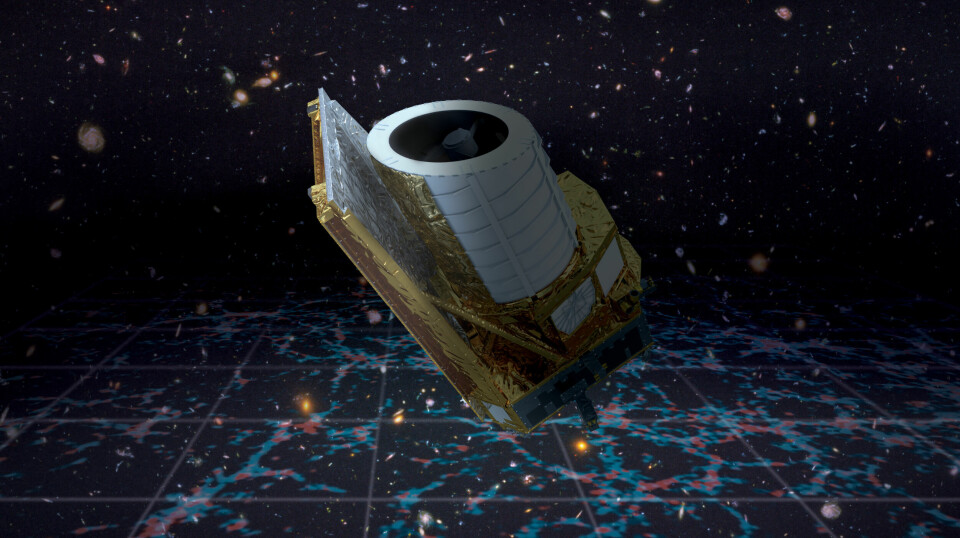
Studying structure formation
Dark matter involves gravity, and dark energy involves expansion.
“By studying structure formation, creating a large 3D map of how structures have been formed in the universe at different times, we can know how efficiently structures have been built up,” says Winther.
“This way we can learn more about how quickly the universe is expanding and about the properties of dark energy.”
When scientists look at galaxies that are up to ten billion light-years away, they are also looking back ten billion years in time. That's because the light has taken so long to reach us.
Beyond the Earth
Euclid is now on the move and will travel to a point called Lagrange Point 2, located on the back side of the Earth as seen from the sun.
The gravitational force from the sun and the earth is equalized at this point, so that the spacecraft can easily remain stable and not be pulled towards the sun or the Earth.
The spacecraft should arrive there about a month from the launch date and will begin studying the sky three months from the launch date.
The telescope is 1.2 metres in diameter. It feeds two instruments that will provide information about the galaxies being observed. One instrument takes pictures in the visible wavelength range – that is, the light we can see.
The second instrument measures infrared light and can analyse how far away the galaxies are.
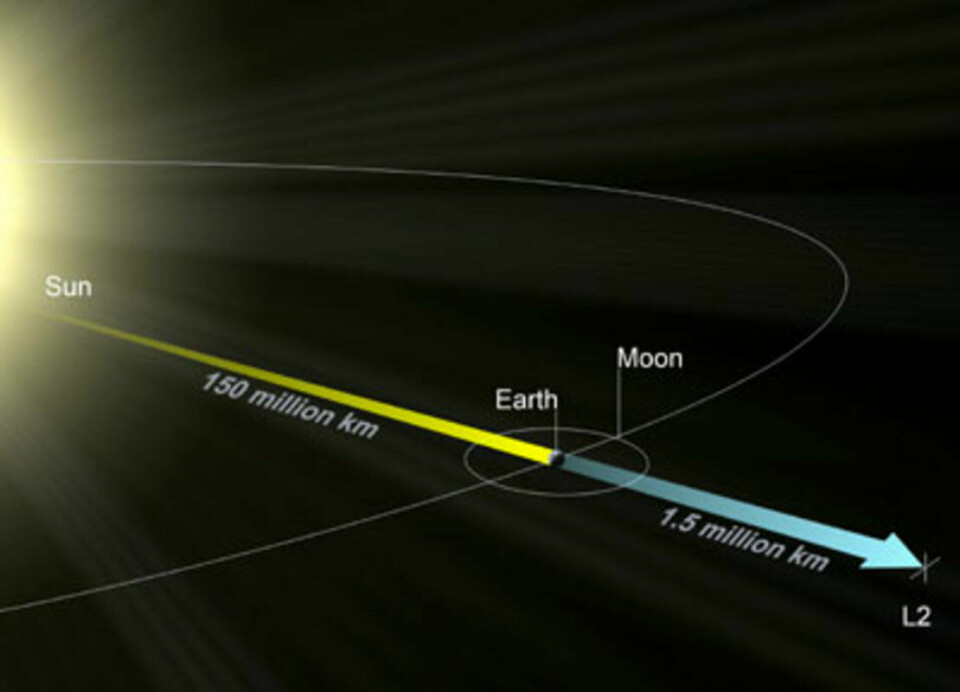
Measuring gravitational lensing
Winther explains that Euclid looks at two things.
“One of Euclid’s tasks is to do a traditional galaxy survey that maps the distribution of galaxies in the sky.”
The second task is to measure weak gravitational lensing.
“When light from a galaxy is emitted and passes through our universe, it is bent by mass when it passes by something like large galaxy clusters. We can measure that bending in the pictures that Euclid takes,” says Winther.
How the light is bent and distributed shows the amount of mass there is.
“The images can tell us something about how matter is distributed in the universe.”
Vacuum energy is a bit boring
Will the space telescope give scientists a better understanding of dark energy and dark matter in, say, ten years?
“We’ll definitely know more about dark energy and dark matter. The question is what exactly we’ll learn about them,” says Winther.
Will the current model be strengthened, or will the information point to something more exotic?
“We have models today for what dark energy is, which is essentially the same as what Einstein originally came up with, a kind of vacuum energy. It'll be kind of boring if it turns out to be just that.”
“The vacuum energy model also has some theoretical problems,” says Winther.
“So we’re hoping for something that gives us new information.”
Studying the universe in different ways
The James Webb Telescope, which studies the universe in infrared light in great detail, was launched at the end of 2021 and has received a lot of attention. Is Euclid just as cool?
“We’re doing different things. For me, Euclid is much more important than James Webb. For people working on galaxy formation, James Webb is more important.”
“In any case, I think it’s important that we’re doing all these different things – studying the universe at different wavelengths and doing the large surveys of the entire sky.”
“Euclid is very important for those of us who are studying cosmology, the workings of the universe on its largest scales.”
———
Read the Norwegian version of this article at forskning.no
------












